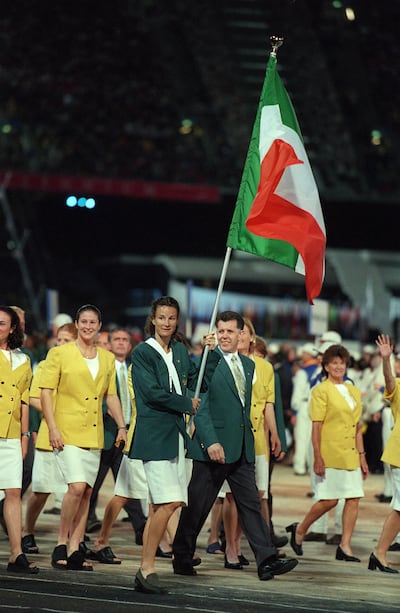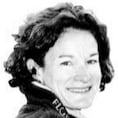Not long now, and while the last few days before the Olympics always builds great excitement from the outside looking in, for some athletes it can be a sort of danger zone when their events feel like they’re fast approaching, and yet still remain some distance away.
A bit like objects in the side mirror being closer than they appear.
Some sports are straight into action from the morning after the Opening Ceremony next Friday (or even before, in the case of the men’s Rugby Sevens), and others including track and field must wait for at least another week.
Among those heats not kicking off until Friday August 2nd are the men’s 1,500m, with the full trio of Irish runners Andrew Coscoran, Cathal Doyle and Luke McCann all set to toe the line with eyes on reaching the semi-final two days later.
READ MORE
Then there’s the women marathon runners, including Fionnuala McCormack, who don’t compete until the very last day of the Olympics, on Sunday August 11th.
Even at this stage it’s hard for athletes not to look ahead like that, get caught up in the Olympic hype that is building every day. Though it probably depends on the athlete and what they are most excited about; being at the Olympics or competing at the Olympics.
Every athlete that qualifies has the opportunity to do something at an event that for many is the pinnacle of their sport. For some, particularly those on the first-time mission, it will be a learning experience. Some will come home more satisfied than others.
Still, for every athlete or team there should be an achievable target, one that they will be satisfied with. That’s why this next week or two can determine so much for many, as it is so easy to become distracted and make decisions that you may regret later, but in time learn from.
The Opening Ceremony is really nothing more than a celebration for the efforts put in by the host city and country, and also a welcoming stage for the national teams. It may be when the Games officially begin, but many athletes will have to make the difficult decision not to attend.
They can still watch from afar, which can often be a lot of fun for the athletes still at the holding camps, where they dress up in the ceremony gear without the ordeal of arriving at the village too early and making any compromises that could negatively affect their athletics performance.
While this is also taper time, it’s also the time for the finishing touches. In my head, I would think that with two weeks to go there is still time for two more long runs, two more solid track sessions, two more threshold sessions, two more hills session. And then all that fills the gaps in between; the easy recovery miles, gym sessions, massage and of course rest.
That’s still a lot of days and hours to fill, and for many athletes trying to find the right balance is a challenge. The ability to change things up without getting unsettled is essential.

Before their competition, most of the Irish athletics team will be based at the town of Fontainebleau, about 90 minutes south of the Olympic Village. A day or two of travel may also need to be accounted for to get through the accreditation processing as smoothly as possible and the transfer to the Village.
The only time I ever went to a team holding camp was before Barcelona, in 1992, my first Olympics. It helped that I knew a lot of the Irish athletes already, the likes of Marcus O’Sullivan, Frank O’Mara, Paul Donavan, John Doherty, Noel Berkeley and Terry McHugh. We all felt comfortable around each other, and while we were relaxed and enjoying ourselves, we were also very focused and deadly serious about the last few training sessions.
Very few of us went to the Opening Ceremony, but I do remember we dressed up in out uniforms and paraded and took photographs around the camp, instead of the Olympic Stadium.
Once inside the Athletes Village, this is the critical time for many to accept and adapt. Some will do this better than others. Some will be spooked by what they are faced with, sharing rooms and surrounded by the distractions of other sports, team coaches and administrators all trying to do the best for the athletes.
It can be a tense time for athletes and sometimes more for the personal coaches, who are on high alert that all the work they’ve done to this point can be so easily unravelled.
The simple task of getting to the stadium for the events becomes a greater ordeal. Or getting to the transport mall to catch the bus, probably earlier than you need, just to be sure you get to the warm-up area on time.
Then there’s the security checks wherever you go, scanning identity cards and bags every time you enter a venue or return to the village. All these little checks and stops along the way can add to the stress and tension.
Over the years the call room process has been toned down a bit, to get the athletes to the track in as short amount of time as possible. Still this is the time when doubts and fears can creep in. And when the experienced Olympians will thrive, a bit like how experienced travellers deal with a flight delay more calmly and accept their fate.

I did attend the Opening Ceremony in Sydney in 2000, after being asked to carry the Irish flag, a great honour you don’t turn down. But even then I was really just going through the motions, focused on getting in and out as quickly as I could. I spent that one night in the Athletes Village, as we were not back until 1am, but it was still one week out from my 5,000m heats and I was focused on not losing any sleep, and certainly not expending more energy than I needed to.
In London 2012, when I was the Team Ireland chef de mission, I was able to take it all in a bit more. I remember when Katie Taylor carried the flag into the stadium, and then just like that she was gone. She didn’t hang around a single second more than she needed to.
More than anything else, this is the time when all Olympic athletes need to continually remind themselves of all the hard work that they have put in, both training and competing over the last few years.
And to think of that line. “I want to be here, and I am here to do the best I can for myself and my country.”














